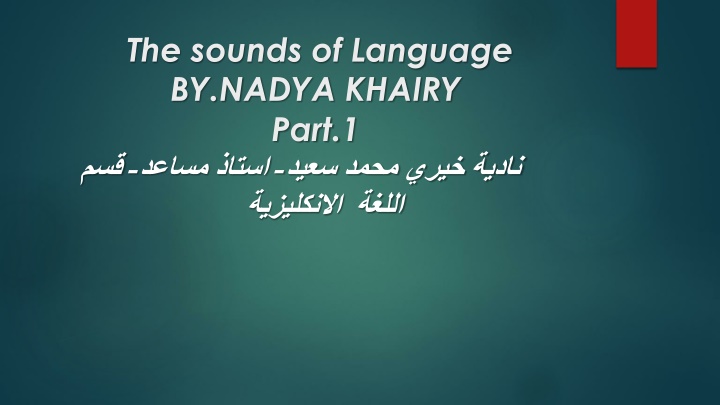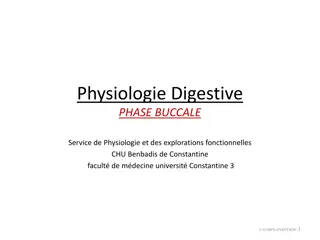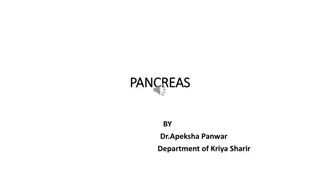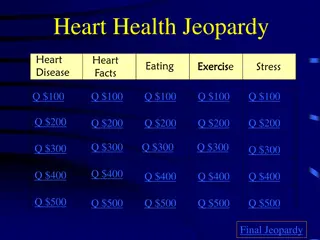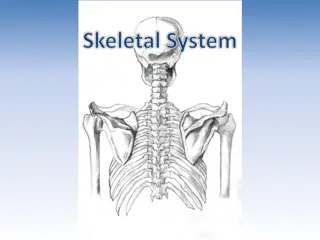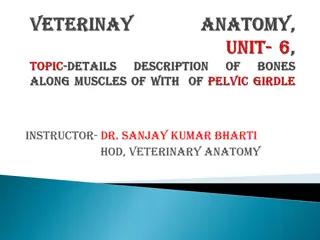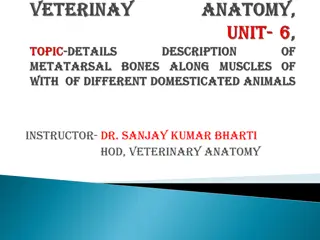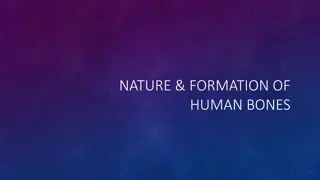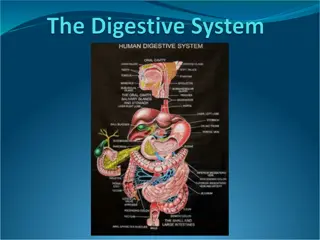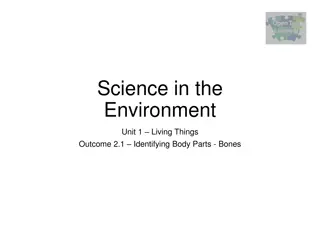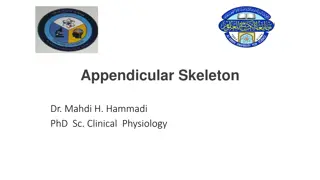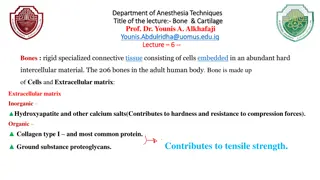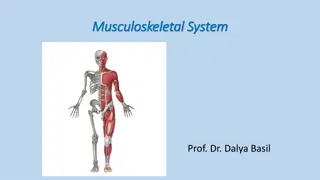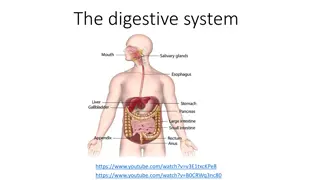Overview of Human Physiology - Digestive System, Skin, Bones, Heart and Blood
The human body is a complex system comprising various organs and structures that work together to maintain health and functionality. From the digestive system facilitating the breakdown of food to the heart pumping blood throughout the body, each component plays a vital role. The skin acts as a protective barrier, bones provide structural support, and blood vessels transport essential nutrients. Understanding these physiological aspects is crucial for overall well-being.
Download Presentation

Please find below an Image/Link to download the presentation.
The content on the website is provided AS IS for your information and personal use only. It may not be sold, licensed, or shared on other websites without obtaining consent from the author.If you encounter any issues during the download, it is possible that the publisher has removed the file from their server.
You are allowed to download the files provided on this website for personal or commercial use, subject to the condition that they are used lawfully. All files are the property of their respective owners.
The content on the website is provided AS IS for your information and personal use only. It may not be sold, licensed, or shared on other websites without obtaining consent from the author.
E N D
Presentation Transcript
The sounds of Language BY.NADYA KHAIRY Part.1 - -
Phonetics: Phonetics is the general study of speech sounds and its characteristics It is divided into three branches: 1-Articulatory Phonetics: A branch of Phonetics which is the study of how speech sounds are made or articulated. 2-Acoustic Phonetics: it branch of phonetics deals with the physical properties of speech as sound waves in the air 3-auditory Phonetics: it is branch of phonetics which deals with the perception, via the ear , of speech sounds
Voiced and voiceless sounds: Speech sounds are produced using the fairly complex oral equipment that we have. We start with the air pushed out by the lungs up through the wind pipe to the Larynx inside there is the vocal folds which take two main positions: 1-When the vocal folds are spread apart, the air from the lungs passes between them unimpeded. Sounds produced this way are described as voiceless. 2-when the vocal folds are drawn together, the air from the lungs repeatedly pushes them apart as it passes through, creating a vibration effect. Sounds produced this way are described as voiced sounds.
Place of Articulation : The term is used to describe many sounds are those which denote the place of articulation of the sound: that is, the location inside the mouth at which constriction takes place. The oral cavity is crucially involved in speech production. To describe the place of articulation of most consonant sounds, we can start at the front of the mouth and work back. The place of articulation is where speech sounds are produced.
1- Bilabials: These sounds are produced using both the (=bi) upper and lower (=labia). Examples of Bilabial sounds are /p/ which is Voiceless, /b/ which is Voiced . 2- Labiodentals: These sounds are formed with the upper teeth and the lower lip. Examples of Labiodental sounds are /f/ which is Voiceless and /v/ which is voiced. 3-Dentals: These sounds are produced with tongue tip behind the upper front teeth. Examples of Dental sounds are / / which is voiced and / / which is voiceless.
4- Alveolars: These sounds are produced with front part of the tongue on the alveolar ridge, which is a rough bony ridge immediately behind the upper front teeth. Ex: /t/, /s/ both are voiceless and /z/, /n/ both are voiced. 5-Palatals: the palate is divided into three parts the Alveolar ridge, the hard palate which immediately comes after the alveolar ridge and the soft palate which is the soft and movable part of the tongue. Sounds that are produced with the tongue and the palate are called Palatals or alveo-palatals. Ex: / / and /t / are both Voiceless. 6- Velars: sounds that are produced with back of the tongue against the velum are called velars. Ex: /k/ which is a Voiceless sound. 7- Glottals: There is one sound that is produced without the active use of the tongue which is the /h/ sound, when the glottis is open, as the air passes through without obstruction , it produces the Voiceless glottal sound /h/.
Limitations of the chart: This chart is far from complete. It contains the majority of sounds used in the basic description of English pronunciation. There are, however, several differences between this basic se of symbols and the much more comprehensive chart produced by the ( IPA). The most obvious difference is in the range of the sounds covered. There are many other consonant sounds in the languages of the world. Another way in which the chart is incomplete is the single entry covering the r sound in English.
